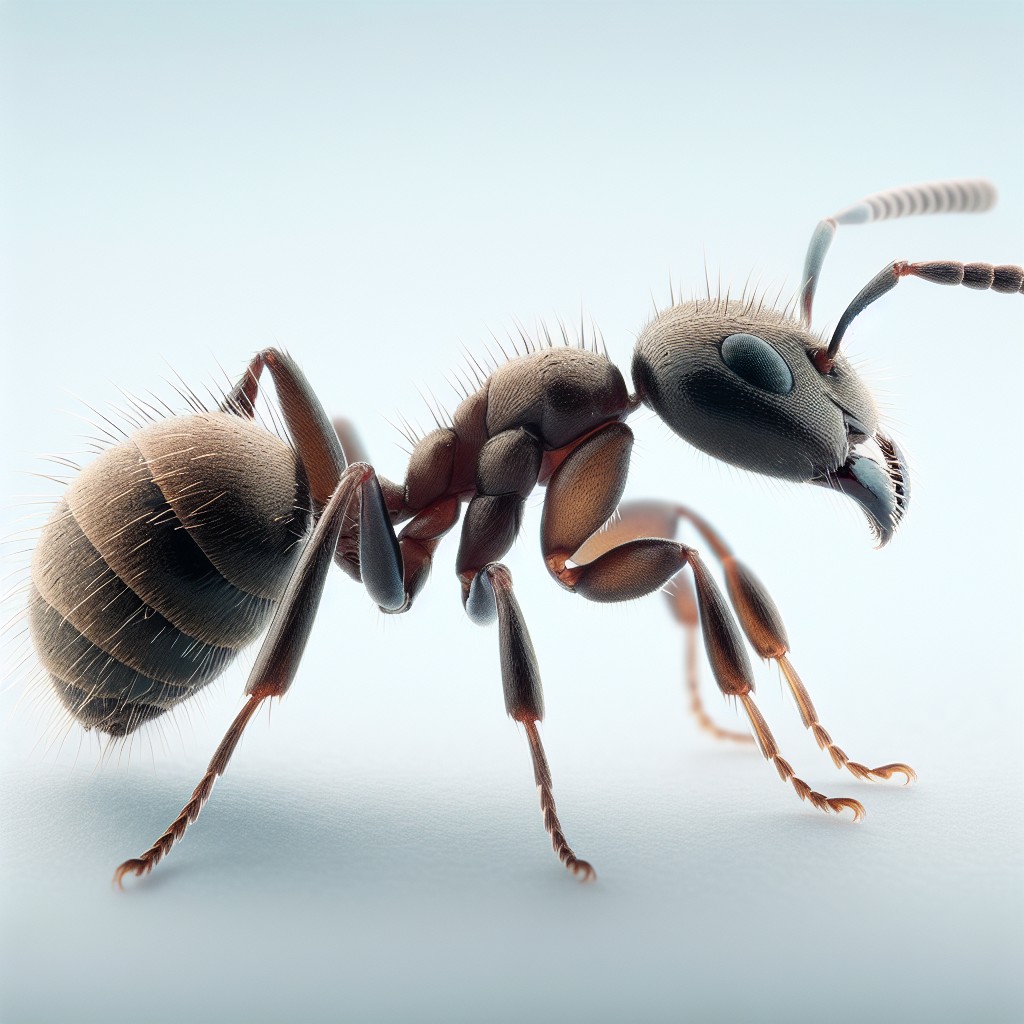Last updated on
This post will provide effective and rapid solutions for ant infestations at home, arming you with practical step-by-step guidance to reclaim your living space.
Key takeaways:
- Eliminate Food Sources: Wipe down surfaces, store food properly, and take out trash regularly.
- Seal Entry Points: Use caulk, weather stripping, and copper mesh to block ants’ access.
- Use Ant Baits: Strategically place poisoned baits near ant pathways and entry points.
- Professional Extermination: Call in experts for effective treatments and long-term solutions.
- Aftercare: Maintain cleanliness, proper food storage, manage moisture, trim vegetation, and perform seasonal checks.
What's Inside
Eliminate Food Sources

The battle against ants begins with cleanliness. They’re on a never-ending quest for food, which your home could generously provide if you’re not careful. Start by wiping down all kitchen surfaces religiously after use. Even a few crumbs or a sticky spill are banquets for these persistent critters.
Consider storing food in airtight containers—this includes pet food, which is often overlooked. An overlooked apple slice or an open bag of chips might be the calling card for your next six-legged invasion.
Don’t forget to take the trash out regularly, and use bins with tight-sealing lids. Compost should also be managed judiciously; a sealed compost bin is far less attractive to ants than an open pile.
It’s not just the kitchen that needs attention. Regularly vacuum or sweep areas where food is consumed. This practice ensures that any rogue food particles are dispatched before ants can mobilize.
Finally, make sure to rinse out jars, bottles, and cans before tossing them into the recycling bin. That last bit of soda or dollop of peanut butter is enough to provide energy for an entire colony to keep on thriving.
Seal Entry Points
With ants marching into your home, it’s imperative to become a detective of sorts—locate and block their paths. Initially, examine the exterior of your dwelling for tiny crevices or cracks. These often go unnoticed but serve as gateways for ants.
Caulking is your first line of defense. Apply it generously to seal gaps around window frames, doorways, and where utility pipes enter. Don’t forget to inspect and repair any holes in window and door screens.
Weather stripping adds another layer of ant-deterrent by sealing the spaces underneath doors and around windows. It’s easy to install and doubles as an energy-saving measure.
Lastly, consider stronger barriers for more persistent cases. Copper mesh can be stuffed into larger holes or openings as ants can’t chew through it. Sealing entry points not only curbs the current invasion but also deters future ones. By taking these steps, you fortify your home against tiny intruders who are looking for easy access to the comforts of your home.
Use Ant Baits
Ant baits are an effective and subtle method to combat an infestation. These baits work by enticing ants with a poisoned food source that they then carry back to the nest. The key is the slow-acting poison, which allows time for the workers to share it with the colony, including the queen. This method can significantly reduce or even eliminate the colony over time.
Strategically placing these baits near frequent ant pathways and close to entry points maximizes their efficacy. Always opt for child and pet-safe products if they are around. Keep in mind, patience is vital as it can take several days to see results. Replenish the baits as needed, and monitor the situation to ensure it’s improving.
Professional Extermination
When home remedies and DIY solutions fall short, it’s time to call in the experts. Professional exterminators come equipped with potent pesticides and the knowledge to address infestations effectively.
They perform thorough inspections to identify the ant species and locate their nests. Skilled professionals will employ targeted treatments that may include baits, sprays, and non-toxic options for households with pets or small children.
Importantly, they can provide insights on how to sustain an ant-free environment by identifying and rectifying structural vulnerabilities in your home.
Opting for professional pest control services can offer peace of mind with warranties and follow-up visits, ensuring that the ant problem is resolved long-term.
Aftercare: Preventing Future Infestations
Maintaining a vigilant approach is key to ensuring ants don’t return for a second round. Consider these straightforward strategies:
1. Routine Cleanliness: Regularly wipe down surfaces, vacuum floors, and keep dishes washed. Crumbs and spills are invitations for ant parties.
2. Proper Food Storage: Invest in airtight containers. Ants have an impressive sense of smell and can find the tiniest morsel left in an improperly sealed package.
3. Manage Moisture: Fix leaky taps and ensure areas under sinks are dry. Ants need water to survive, so don’t provide a free watering hole.
4. Trim Back Vegetation: Overgrown bushes or branches in contact with your house serve as bridges for ants. Keep the greenery pruned and your home less accessible.
5. Seasonal Checks: As the weather changes, so do the entry points. Regular inspections for cracks or crevices can keep your defenses high.
Remember, persistence pays off. Making these habits part of your routine not only deters ants but also creates a healthier living space.




